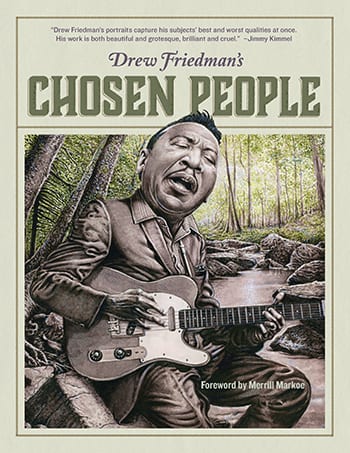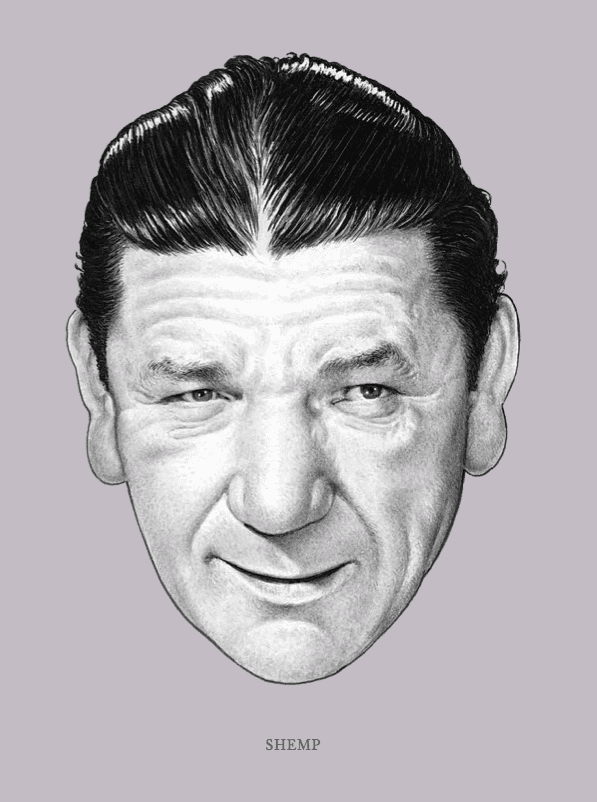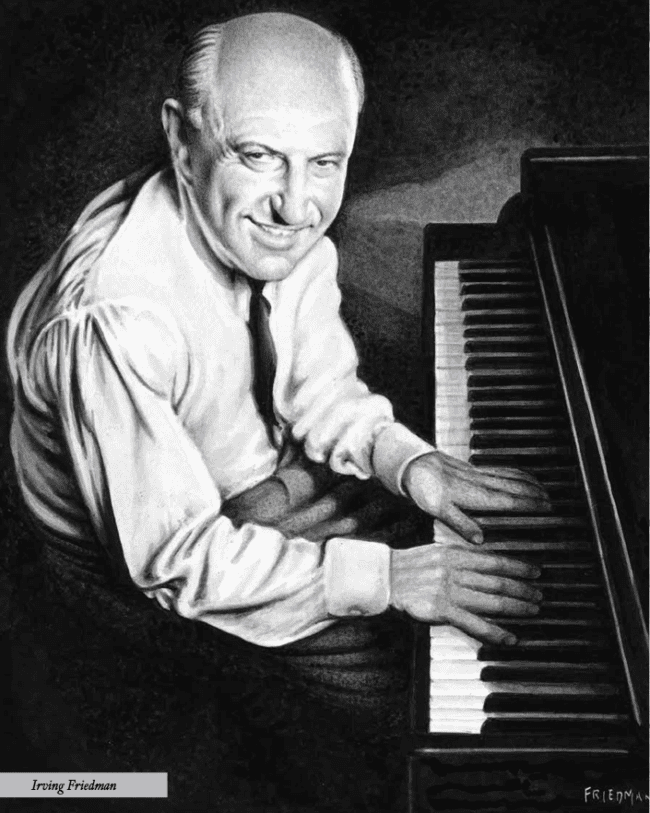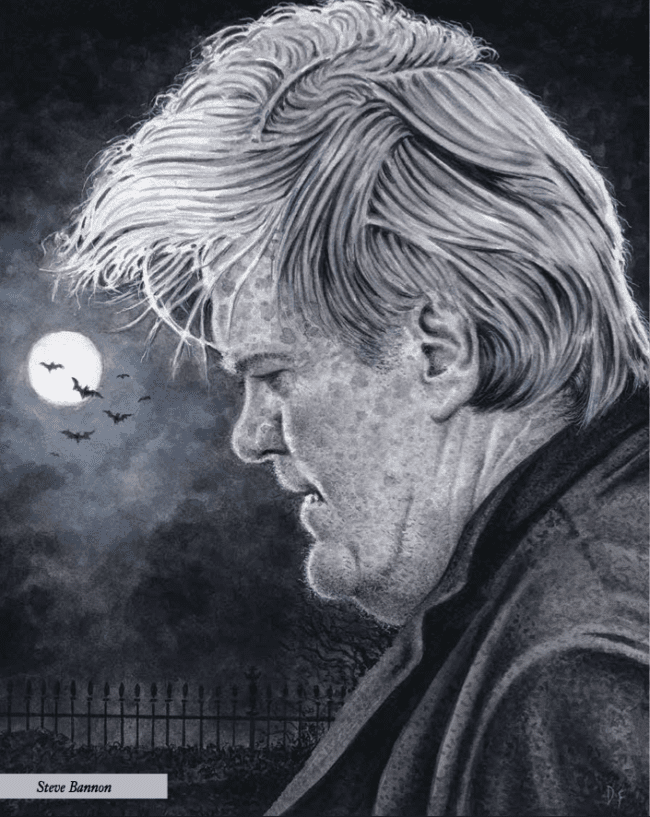 They say the rational part of the human brain isn't fully developed until age 25. I’ve known Drew Friedman for my entire adult life and then some, and I can state with fair certainty this association impacted those last few crucial years of rational development (or lack thereof). We have been classmates, friends, collaborators, and occasional co-conspirators. And today for The Comics Journal, we play at Joe Franklin and some guy who runs a swimming pool cleaning service in Mount Kisco, to celebrate his latest achievement in arts and letters, Drew Friedman’s Chosen People—the greatest book of portraits in history and the only one to include Bobby Barber!
They say the rational part of the human brain isn't fully developed until age 25. I’ve known Drew Friedman for my entire adult life and then some, and I can state with fair certainty this association impacted those last few crucial years of rational development (or lack thereof). We have been classmates, friends, collaborators, and occasional co-conspirators. And today for The Comics Journal, we play at Joe Franklin and some guy who runs a swimming pool cleaning service in Mount Kisco, to celebrate his latest achievement in arts and letters, Drew Friedman’s Chosen People—the greatest book of portraits in history and the only one to include Bobby Barber!
Mark Newgarden: Shemp?
Drew Friedman: Shemp’s punim appears, including in the end papers, 383 times in this book, the uncontested all-time record for Shemp appearances in one book. I think that’s worthy of being mentioned in the Guinness Book of World Records? I enjoy converting people to the cult of Shemp, and educating our youth. As Merrill Markoe writes in her foreword: “To appreciate Drew Friedman is to appreciate Shemp, maybe a little too much.” I adore Curly, but that’s almost too easy, just like it’s too easy to hate Jerry Lewis. Shemp is more of a challenge.
Shemp looked like a real guy, a guy you’d see staggering down the block. He was accessible, like the drunken relative you’d see at a wedding, seder, or Bar Mitzvah, or a guy you’d see working as a waiter in a crappy restaurant or a crummy shoe or novelty store. And the name “Shemp,” it’s a beautiful and unique name… word… sound… noise… croak. Kathy and I are child-free, but if we had a child, boy or girl, rest assured, their name would be Shemp. Although we haven’t as of yet awarded that name on any of our beagles.
Your title, Chosen People, implies a connection to Judaism (which in fact was a stated criteria for inclusion in several of your previous volumes). What were your criteria for choosing the Chosen for this one?
The great caustic yet forgotten caricaturist Alex Gard, who I included in the book, briefly had a feature in the early '30s called "Gard’s Chosen People". Of course “Gard’s” was a clever spin, but I thought the “Chosen People” aspect worked for what I was trying to convey with this particular book, people chosen by me, so I borrowed that.
This book isn’t just portraits of the “chosen people” like my three volumes of Old Jewish Comedians, and I don’t want to be the artist that people equate to drawing only Jewish people. So I thought it was important not to have a Jew on the cover. Although after seeing the book, Gilbert Gottfried thought it was Murray Walters on the cover.
The inclusions are a mix: many people I greatly admire, some not so much. Some were assignments, some privately commissioned pieces, like the Steve Jobs, Three Stooges, and Leo Gorcey & Huntz Hall. Some were drawn to accompany forewords written by folks for some of my earlier books, like the Larry Gelbart, Penn Jillette, and Karen Green. Some portraits were created to be prints, and many were drawn specifically for the book. But even the drawings that were assignments or commissions apply, since I chose to accept the job, so I must have found something appealing about drawing them, even if it’s someone I couldn’t care much about, like former New York City mayoral candidate Joe Lhota, or New York Mets pitcher Jacob deGrom, or Kathie Lee Gifford.
Caricaturist? Portraitist? Illustrator? Landscape painter of the human face?
I like the last one. The comics critic Robert Clough once wrote that I’m a “restless" artist, which I think is true. Giving up the stipple work over twenty years ago justifies that tag, as well as jumping around to different genres.
I really like this book’s format a lot. It fits in your coat pocket and feels like a stalker’s field guide to exotic, endangered species. Can you tell us about the decisions involved in the switch to something (deceptively) resembling a trade “gift book” impulse-buy format?
The smaller size and format, yeah, that was my request. The embossing of Muddy on the cover was Fantagraphics's idea. Keeli McCarthy, the book’s designer, did a fantastic job. I wanted this book to be smaller and more compact than my others, easy to grab and to read on the beach at the Jersey Shore, or on the bus or subway, or to enjoy when you’re behind the wheel doing 85 on the freeway. It’s basically the same size as the Abrams Topps books and the Crumb blues musicians books, which I think is a nifty format.
My last few books were large; especially the Heroes of the Comics books, and caused a number of herniated discs. This one I think is more accessible, user-friendly, and ultimately pain-free. Actual books are an endangered species, and I plan to die out with them.
Who is the audience for this book?
Shemp lovers, Jimmy Grippo fanatics, Al Lewis worshipers, Richard Deacon loyalists, Guy Marks junkies, Sammy Petrillo partisans, Groucho admirers, Howlin’ Wolf zealots, Murray Walters disciples, Maurice Gosfield followers, Bobby Barber groupies, Joe Franklin devotees, dead elevator operator enthusiasts, Max Asnas patrons, Fanny Brice aficionados, R. Crumb collectors, Merrill Markoe readers, and, people who admire non-glamorized, non-homogenized, warts and all portraiture.
Who isn’t the audience for this book?
People who find warts, pimples, wrinkles, flop-sweat, jowls, boils, rosacea, nose hairs, ear hairs, drool, baggy eyes, gin blossoms, moles, liver spots, neck waddles, nasal labia folds, crinkles, furrows, creases, puss, pustules, bumps, lumps, yellowing and/or rotting teeth, missing teeth, gums, dentures, saliva, double chins, triple chins, blotches, scars, lumps, zits, five o’clock shadows, folds, bulbous noses, craters, chapped lips, man-boobs, goiters, pock marks, whiteheads, blackheads, rashes, nose leakages, emasculations, calluses, scabs, balding/bald heads, nodules, freckles, protuberances, welts, carbuncles, papules, festers, and Shemp distasteful.
When we were students at SVA, you once told me that after college you planned on becoming “a producer.” Any regrets that you stuck with drawing liver spots and steered clear of show business?
Liver spots are my “Ninas.”
I have absolutely no memory of having said that but I probably did over multiple beers and Chinese food in Chinatown. I suppose I envisioned myself as the next George Jessel or Max Bialystock? Back then we bounced a lot of interesting future plans back and forth. Didn’t we discuss starting an agency to book comedians for funerals?
I know there was a time before we met at SVA that I resisted becoming a cartoonist or illustrator, and considered a career in stand-up comedy. But like Pacino in The Godfather Part III, it was inevitable, I was sucked back in. I have no regrets about not entering show business. I was witness to what my dad went through over the years in Hollywood and although he’s had great success in his career, things could also get very demoralizing for him. But he had a knack for bouncing back which is what you need to survive, I don’t know if I could have.
I’m a contented misanthrope; I like the life of a solitary artist, emerging from my undisclosed underground bunker from time to time to promote a new book. And I’ve gotten enough of a show biz fix by having greats like Abe Vigoda, Joe Franklin, or Larry Storch on hand to help celebrate my latest releases.
What is it about famous people? How much does fame matter? Is there more satisfaction in drawing Barbra Streisand than Bobby Barber?
No comparison. Drawing Bobby Barber (who of course was the small, bald-headed actor best known as Abbott and Costello’s court jester on the sets of their movies and TV show, but also appeared in hundreds of films and TV shows over five decades, usually in bit walk-on parts, sometimes on screen for mere seconds) was an absolute pleasure to render. Drawing the Streisand portrait that appears in the book was a cover assignment for the New York Observer. “Chico needed the money.” But, although I greatly admire one over the other, I still put the same amount of time and effort into each. I don’t ever want to cheat the audience.
A friend recently said to me, “But Drew, you love celebrities!” I responded, “No, I hate celebrities.” Which was an easy comeback and a bit too harsh. The truth is that celebrities are just nothing special to me. They’ve been lucky I suppose but they go to the bathroom just like everyone else. Most I have marginal interest in at best. The folks in the arts, then and now, who I most admire and feel drawn to draw are the ones I respect for their talent, or lack of talent, not their fame, or lack of fame.
Are your subject’s physiognomies generally more interesting to you than their lives and achievements? Is there a sliding scale at play?
It depends. The cartoonists I include in this book are artists I greatly admire, and all have compelling faces: underground greats like R. Crumb who I continuously draw over the years and who pops up four times in the book, the late Jay Lynch, S. Clay Wilson, Rory Hayes, Spain, Bobby London, and several others. The same with some of the younger cartoonists that I include: Charles Burns, Chris Ware, Dan Clowes—engrossing, interesting faces that I think reflect their talents.
I include a portrait of my grandfather Irving Friedman, a small, dapper, low-key guy, who spent his life working at a ladies hosiery factory in the garment district, lived his whole life in the Bronx. He enjoyed playing show tunes on the piano, cigars and baseball. And he was also the father of the novelist and humorist Bruce Jay Friedman. My dad’s mother Molly was the over-the top, larger-than-life parent—my dad fictionalized her in his novel A Mother's Kisses—but I chose to include Irving in this book. I’ll get to Molly.
I also include one of the most vile creatures to have ever have surfaced from the depths of a swamp, Steve Bannon. When I first saw that disturbing visage, I felt I had to capture it… a noggin born for me to draw. I had the title of the piece before I drew it, “Creature of the Right.” But this book is pretty politics-light and 100% Trump-free. People need a break. I’ve drawn Trump plenty of times in the past, I was warning about him in the pages of Spy over thirty years ago, back when he was just another unethical, womanizing New York City real estate developer. Little good it did. Sigh…
Who is the ideal Drew Friedman subject in terms of both form and content?
Shemp.
Your reliance on alphabetical order in this book’s format creates many spreads of strange and sometimes magical bedfellows. Was anybody cut because they just didn’t work opposite an unqualified keeper? Any personal favorite combos?
Nothing really needed to be shuffled to avoid potential mismatches. My favorite spread is probably Houston Deli-man Ziggy Gruber facing brilliant wacko underground cartoonist Rory Hayes, two guys who are polar opposites. But the teaming just seemed right. We (editor Eric Reynolds and I) did a little finagling to make sure that when there were two portraits of the same person, like Lou Jacobi, Groucho Marx, or Gilbert Gottfried, they would be on the same spread facing each other.
Sadly, Bobby Barber got the booby prize, having to split his spread with Steve Bannon. I do feel bad about that. Bannon, on the other hand, should feel greatly honored.
Is there anybody you would never draw under any circumstances?
I really can’t think of anyone in particular although I tend to turn down private commissions to draw individual people, or couples, especially couples with children. My response is basically: “Seriously, you want me to draw you and your family? You might want to rethink that.”
How comfortable were you drawing yourself for this book?
I struggled with that portrait, which I reluctantly used on my bio page in the back of the book. There was nothing in my face I could seize onto to play up or exaggerate. It was actually painted in color but I opted to run it in black-and-white. One guy said to me after going through the book, “I loved all the drawings except for that one you did of yourself.” I accepted that.
What’s the most misunderstood thing about your work?
Someone once said to me, “You really GOT HIM!” after seeing a particular image I drew, and that confused me. It’s not my agenda to get people, I’m not a caricaturist who exaggerates features in order to be cruel or to get easy laughs. I strive for the work to be honest and if it sometimes seems vicious, so be it. But I never tried to make a Dick Cheney look any worse than a Hillary Clinton; they’re all part of the same conglomeration.
I still laff out loud at your comics (and even louder at your earlier gag cartoons). The strips you created with your brother Josh Alan Friedman are easily among the funniest ever created. What would it take for you to draw comics again?
Thanks. I enjoyed creating all those comics years ago. The problem for me now is that there just aren’t the outlets there used to be for running my kind of comics. Back then there was RAW, Weirdo, Bad News, Comical Funnies, High Times, Heavy Metal, and the National Lampoon, among others. I recently created an eight-page comic about my long association and friendship with R. Crumb. It was an exhausting amount of work. But the response was gratifying and Roz Chast included it in last year’s Best American Comics series. I plan to create more comics, more autobiographical stuff, and I have a piece on the drawing board about the Lou Jacobi archives, which I recently acquired.
Can your work transform Pronksy into Plonksy? If so, how?
I’d say no, I don’t see how that would be possible. They’re both such extreme opposites. Keep it Plonsky!












